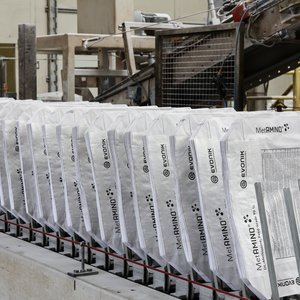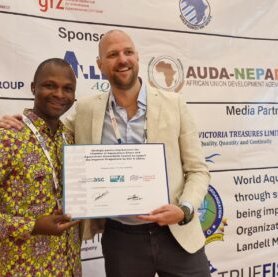IFFO has published a letter to The Economist and position paper in response to a scientific paper indicating there is a potential for fishmeal used in aquaculture feed to be a vector for antibiotic resistant genes.
Letter to the Economist
Response to Antibiotic resistance in fish farms is passed on from fish food’ Sept 7th, 2017
The dangers of misreporting science
Dear Sir/Madam,
Your article makes very sweeping generalisations based on scientific paper that reports on a very small sample size. The authors’ eagerness to attack the fish farming and fishmeal industry has unfortunately caused a lack of perspective and critical appraisal of the facts. While antibiotic resistance is a real concern, the findings in the paper by Wang et al need further investigation, not least of all due to the reported presence of several antibiotics in fishmeal made from whole wild fish that would not have come into contact with antibiotics at any stage. Fishmeal samples are named as being from various countries of origin but were purchased locally in China with no guarantee of their purity or integrity. Given reports of adulteration of imported fishmeal in China, this is clearly a concern.
Only five samples of marine sediment were taken, with no control sample for comparison from elsewhere in the marine environment, an environment also impacted by human populations and agriculture.
The majority of fishmeal is made from small species of wild caught, whole fish for which there is no human consumption market. While trimmings, offcuts and byproducts from fish processing are recycled into fishmeal, much of this material is also from wild caught fish so would also not come into contact with antibiotics. The remaining portion of byproducts from farmed fish could conceivably have had some contact with antibiotics but their use is strictly controlled and, as fish health management and vaccines improve, is reducing over time with some farming areas now antibiotic free for many years.
There is good evidence to suggest that the use of fishmeal in fish feed is actually therapeutic, contributing to better gut health and immune systems, making farmed fish less likely to need treatment with antibiotics.
To write an opinion about a 5 million tonnes a year global fish farming industry that is making a significant contribution to global nutrition, we would urge seeking more evidence than this one study.
IFFO response: Antibiotic resistant genes found in fishmeal
We are aware of the recent publication of a scientific paper indicating there is a potential for fishmeal used in aquaculture feed to be a vector for antibiotic resistant genes. This is a first study in the subject, and as such, we must exercise caution in how the results are interpreted without further confirmation of the findings. The work is also notable as having been undertaken on a very limited sample number (5 fishmeal products; 2 terrestrial animal products), and as such is not an extensive investigation.
While antibiotic resistance is a concern in any food stuff, (and IFFO recognises the importance of managing antibiotics in order to protect the availability of treatments for human health), the paper raises several questions. We have the following observations:
The majority of fishmeal is produced from whole fish caught in the wild where there is no contact with antibiotics, nor are antibiotics used in the manufacturing process. The paper shows a sample of Peruvian fishmeal, which would be entirely made from wild caught Peruvian anchoveta, to have seven different antibiotic residues present. As the sampling was conducted in China and not in Peru, we are seeking clarification of the measures taken to protect samples from contamination.
Although the majority of fishmeal comes from whole fish with the pelagic species dominating, some fishmeal is produced from recycled fish trimmings. IFFO estimates that approximately 33% of the total annual volume comes from this raw material, and although some of the source of this raw material will be aquaculture byproduct, the majority is wild capture byproduct and, again, would not come into contact with antibiotics. The use of antibiotics on farmed fish is expensive and limited, as noted by a Joint FAO/OIE/WHO Expert Consultation on Antimicrobial Use in Aquaculture in countries where “licensing and regulation of the use of antimicrobials are strictly enforced and where use is always under veterinary guidance, it would be typical that 2-4 agents would be available to aquaculture”.
In general, aquafeed companies have quality management systems in place to check the integrity of the ingredients that are used in their feed manufacture.
Antibiotic Resistant Genes (ARGs) are susceptible to degradation in the environment and the transfer of genes to other bacteria is a complex process with a number of conditions that must be met for transfer to occur. It is not clear what risk detectable ARGs represent in the mariculture environment.
ARGs have been found to be present in apparently isolated locations around the world, including some very extreme environments such as permafrost and cave systems. They may therefore have become somewhat ubiquitous in the environment. The inclusion of a sample control in the paper such as other marine sediments not within the vicinity of a mariculture unit would have helped to identify whether fish farms are actually the source of the ARGs. Perhaps ARGs may be present in other marine sediments?
Only very limited (n=2) other feed ingredients have been included in the test which would have been a useful comparison or control. It is possible that the presence of nutrients in the sediment (from either fishmeal or other feed ingredients) are encouraging the growth of sediment bacteria which may contain ARGs that do not originate from fishmeal.
Fish farms in China are often notable for their proximity to human populations, and it may well be that any selection pressure on bacterial communities arising from antibiotic use is a result of other sources, such as sewage effluent, for example. For centuries China has been a leader in polyculture systems where avian species such as ducks are reared in contact within an aquaculture system. In many instances, these are not isolated or true monoculture systems. The wide range of different antibiotics observed also aligns with the suggestion that the source is not the fish farms themselves as antibiotics used as fish chemotherapeutants have tended to be limited in number.
The authors’ state there is a poor link between Antibiotic Resistant Genes (ARG’s) and the specific antibiotic, which appears contradictory.
Food safety is one of IFFO’s core values and fishmeal is rightly regarded as a high quality product that supports the global production of millions of tonnes of fish, pork, and poultry. It is important that a perspective is maintained in interpreting the results of a limited, early study, around which there are some questions about the sampling methodology. To extrapolate the results of a limited study to an important global supply chain is unreasonable without much additional information.










